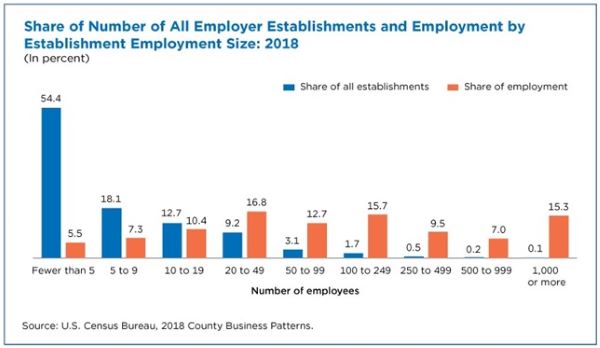What Is a UPC? Meaning and How to Get a UPC

A Universal Product Code or UPC is essential if you want your small business to prosper and expand.
This code makes ventures more profitable and efficient, so you should take the time to understand what it means and how it works.
Are you willing to lower checkout times, boost inventory management, learn about essential sales data, and trace products? Keep on reading to find out how UPCs can help you with that.
What Does UPC Stand for?
UPC means Universal Product Code. This abbreviation usually refers to a barcode on a product.
This special symbol includes information about the item or the product. This data may comprise the product’s color, flavor, or size. The lasers are utilized to scan this barcode.
What Do UPCs Mean?
A UPC is a barcode printed on an item or product to help determine a particular item.
There are two parts of this code – the unique 12-digit number and the barcode itself, which can be read by a machine and presents a number of unique black bars. Why is this UPC beneficial?
It aims to help define the product or item features, including the size, item, brand name, color, etc. This is the initial purpose of these codes and the main reason they were designed.
It facilitates tracking of the inventory within a warehouse or store. Small business owners can benefit from these codes and make their ventures even more successful.
Many consumers know that loans like Rapid Cash offer additional cash for their near-term monetary needs. If you urgently need to fulfill a cash need, you may rely on a small loan from online lenders.
When your small venture expands and you gain more profit, you won’t need to count on lending tools and will feel more stable. How do you get this code?
If you want to obtain this barcode for your products, you should apply to the GS1 US. This organization controls the assignments of UPCs across the country.
Ways to Obtain a UPC
The survey issued by the Census Bureau on establishment sizes states that there were 8,155 ventures with over 1,000 employees in the country in 2018 and about 54% of employer businesses hired fewer than five workers.
The largest companies comprised over 20% of the overall yearly payroll in the same year, paying about $73,590 to each employee.
How do you get this barcode?
- Define how many UPCs you require. How many types of products do you have? Every product type you sell needs a particular UPC. You should have separate barcodes for each category if you sell cookies in different flavors and box sizes. Each UPC will tell about your item’s specific size, type, color, or flavor.
- Select where you buy the UPCs. GS1 manages the information and sets standards about UPC codes. This is a nonprofit company. If you are a small business owner, you may purchase barcodes from this or any other company that sets them. It’s significant to ensure the retailers you cooperate with accept UPCs from third parties on their sales sites and platforms.
- Pay for the codes. There are certain charges you need to pay for the barcodes. The expenses associated with this purchase vary among providers. Besides, the pay may depend on the number of UPCs you require. The initial charge should be paid upfront, while you may face periodic or yearly fees later.
- Obtain your barcodes. Once you’ve chosen and paid for the UPCs, you can download them. The service provider’s website contains all the details on downloading each barcode you paid for.
Types of UPCs
The article on acquiring Universal Product Codes in the USA and Canada by the US Commercial Service explains the nuances and details of using UPCs in these two countries.
According to this article, UPCs are significant for ensuring the business or company products are successful at retail.
Using UPCs is essential as any venture that aims to sell through large retailers needs to have these codes.
Here are the most widespread types of UPC codes:
- ITF-14 barcodes. These codes are used for boxes in distribution centers and warehouses to define pallets, cartons, or cases.
- GS1 DataBar barcodes. Such codes are meant for coupons, produce, or fresh items. These barcodes comprise extra details concerning expiration dates and are small in size.
- QR codes. These patterns are two-dimensional and connect to web data concerning the item or the product. You may utilize your mobile phone for scanning such codes faster.
- GS1-128 barcodes. They include a GTIN and additional details about the expiration date and the item itself.
Benefits of UPCs
There are many benefits to getting UPCs for your business. QR codes and other alternatives allow one to scan these codes fast to immediately determine the type of item or product and its features, including size, flavor, or brand name.
These barcodes are meant to boost productivity and efficiency, as there is no need to enter the item details manually.
Hence, they also save you time. Business owners and entrepreneurs may easily control inventory instead of counting everything manually. This way, they will know precisely when and how many items or products they need in their warehouses or retail shops.
Besides, these barcodes help track the distribution of products to retail stores and check if there are any problems with particular items.
The Bottom Line
Both consumers and enterprises can benefit from getting UPCs. These special barcodes present unique product codes printed on the product package.
They help to identify the item or the product. Generally, small business owners will benefit from these codes, so if you want your company to become profitable and successful, you should obtain UPCs for each product you sell.
These barcodes will assist entrepreneurs in improving inventory tracking, tracing their items, realizing essential sales information, and decreasing checkout times.



